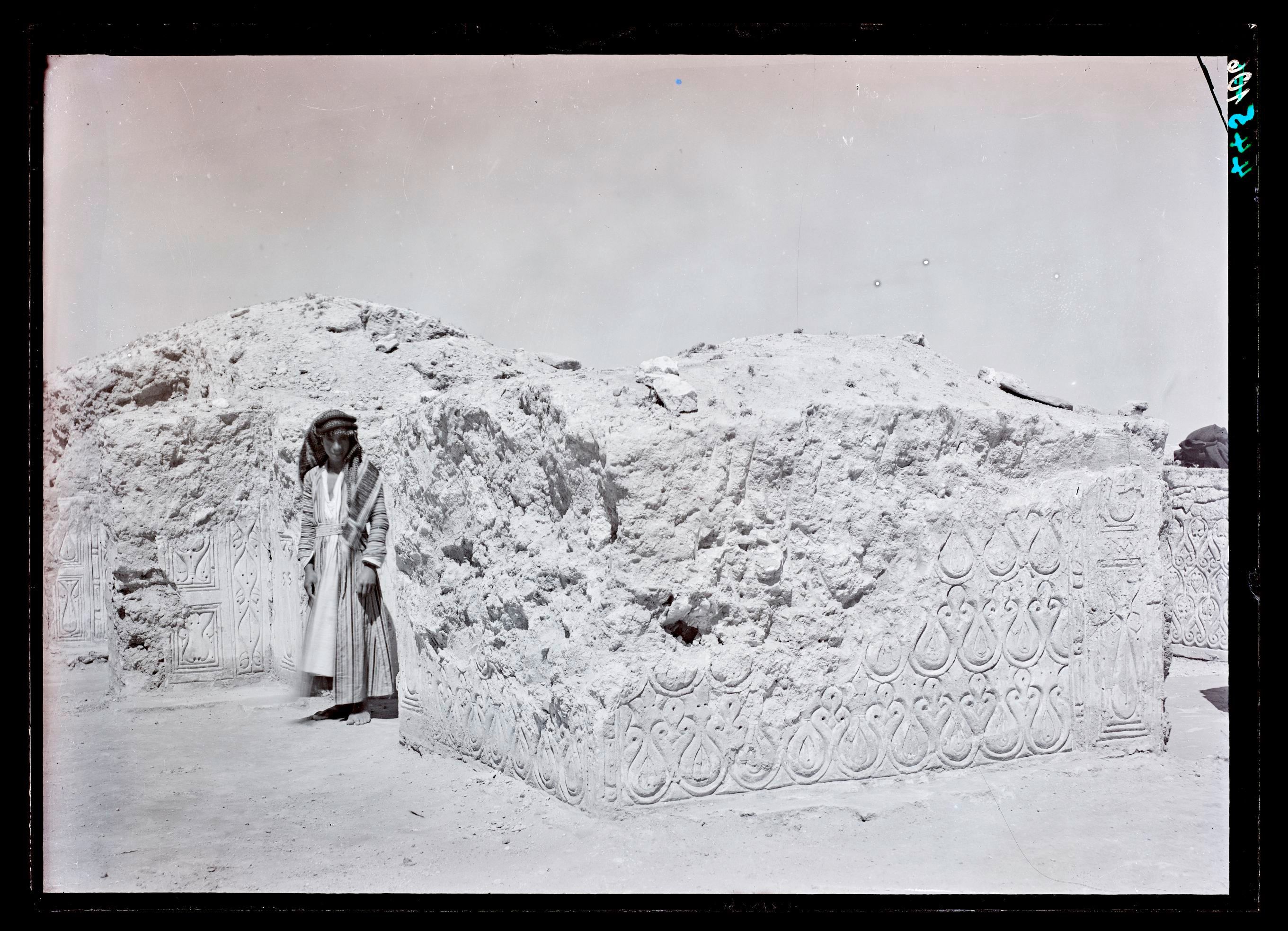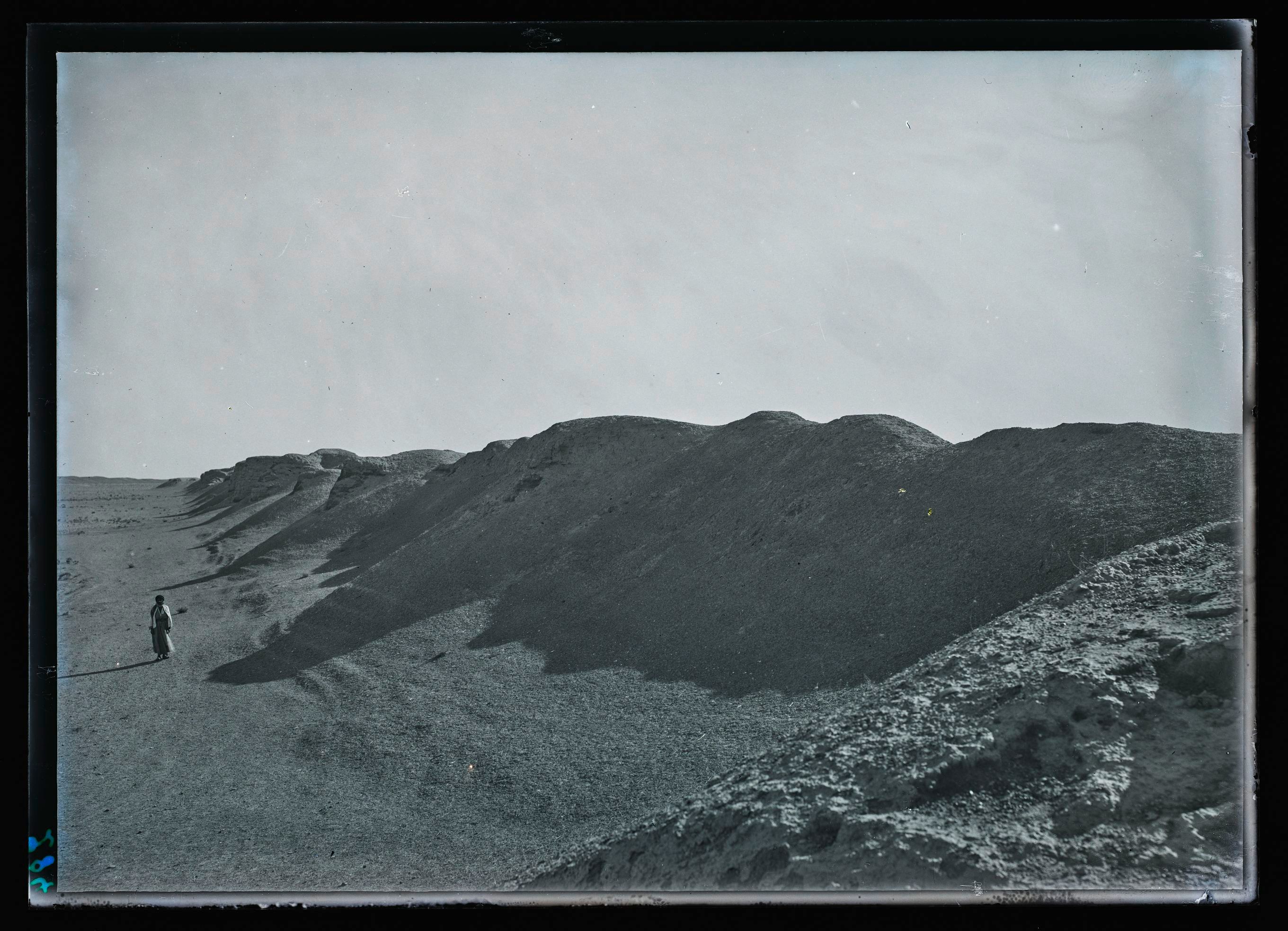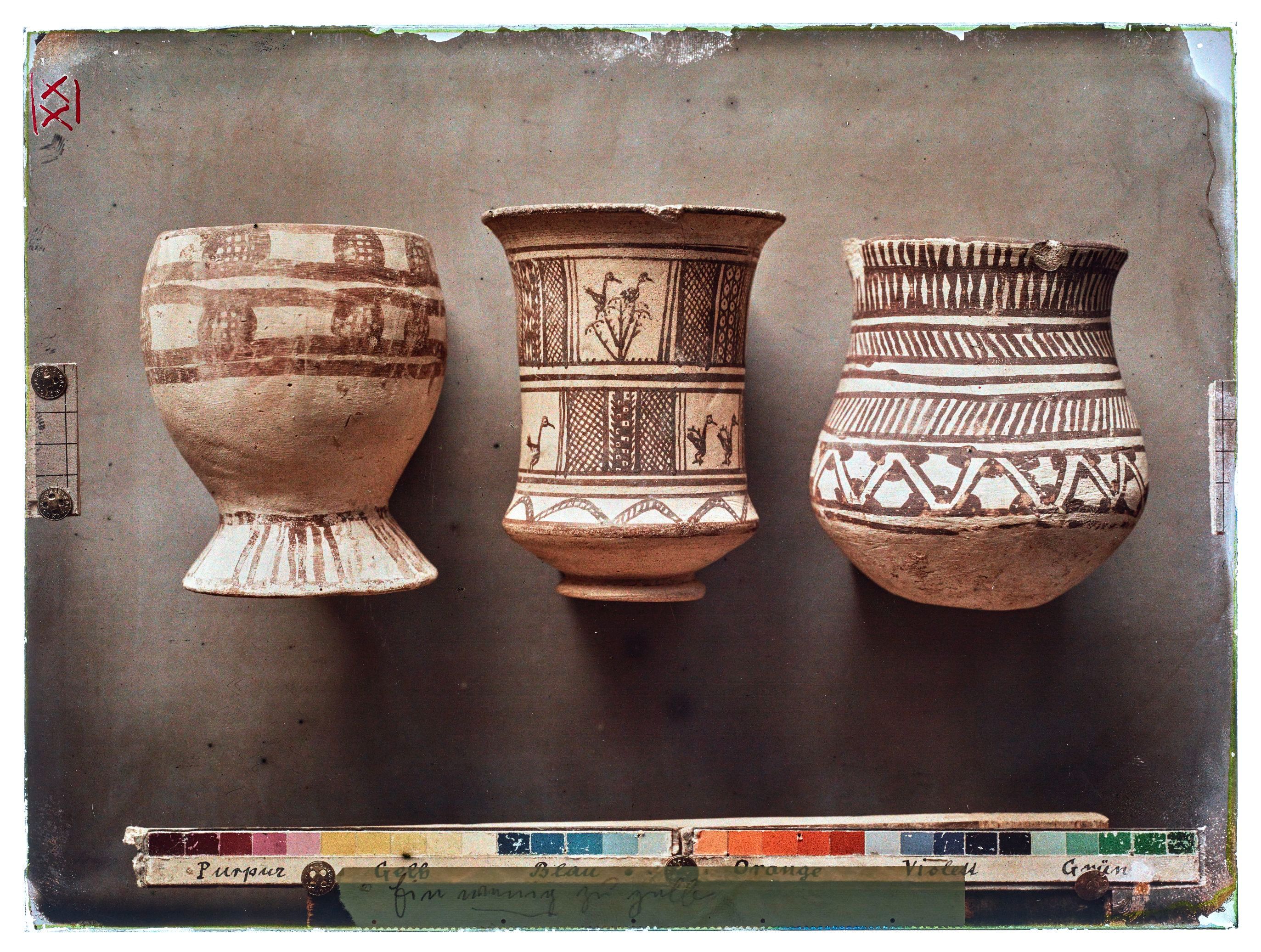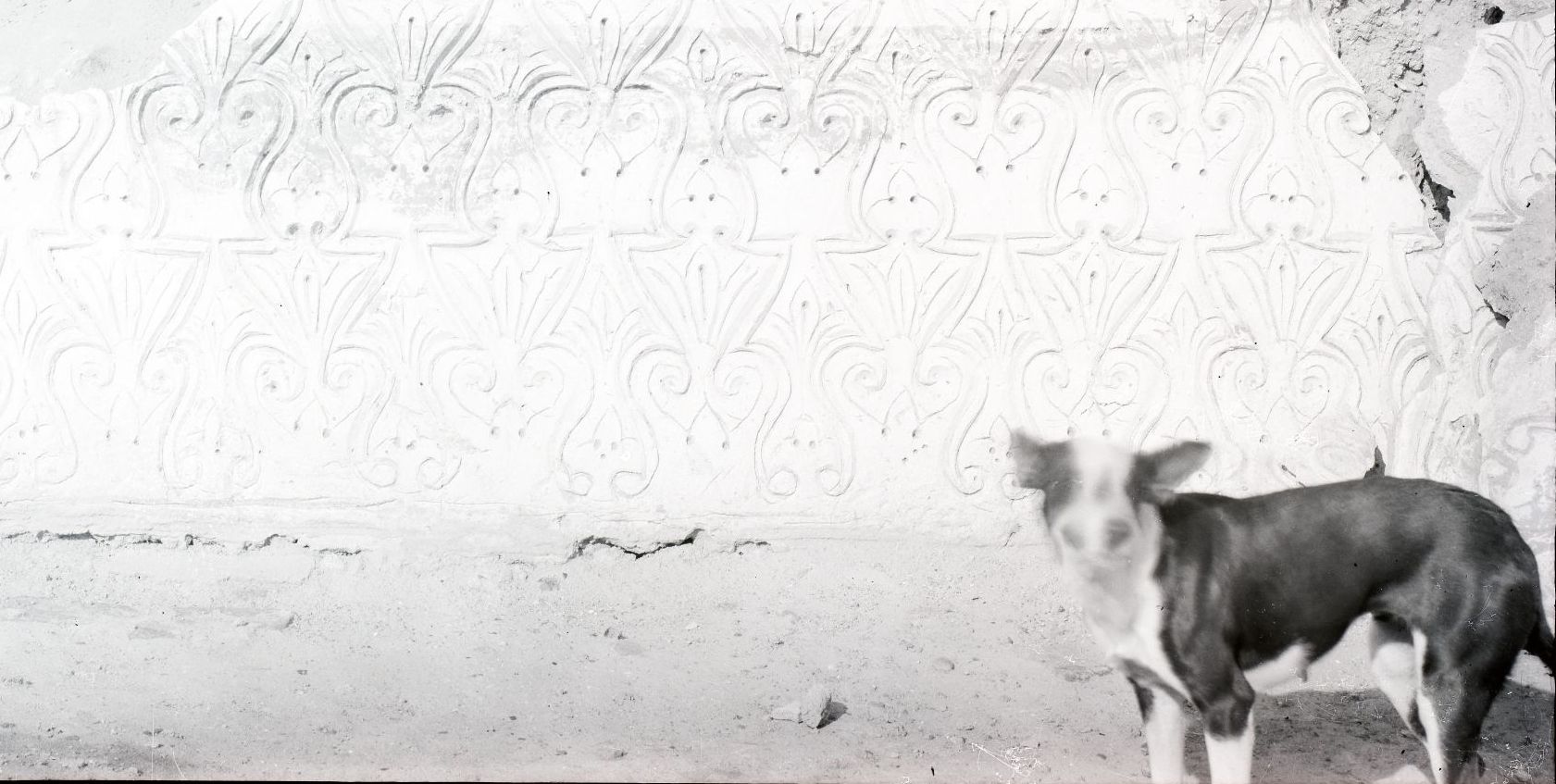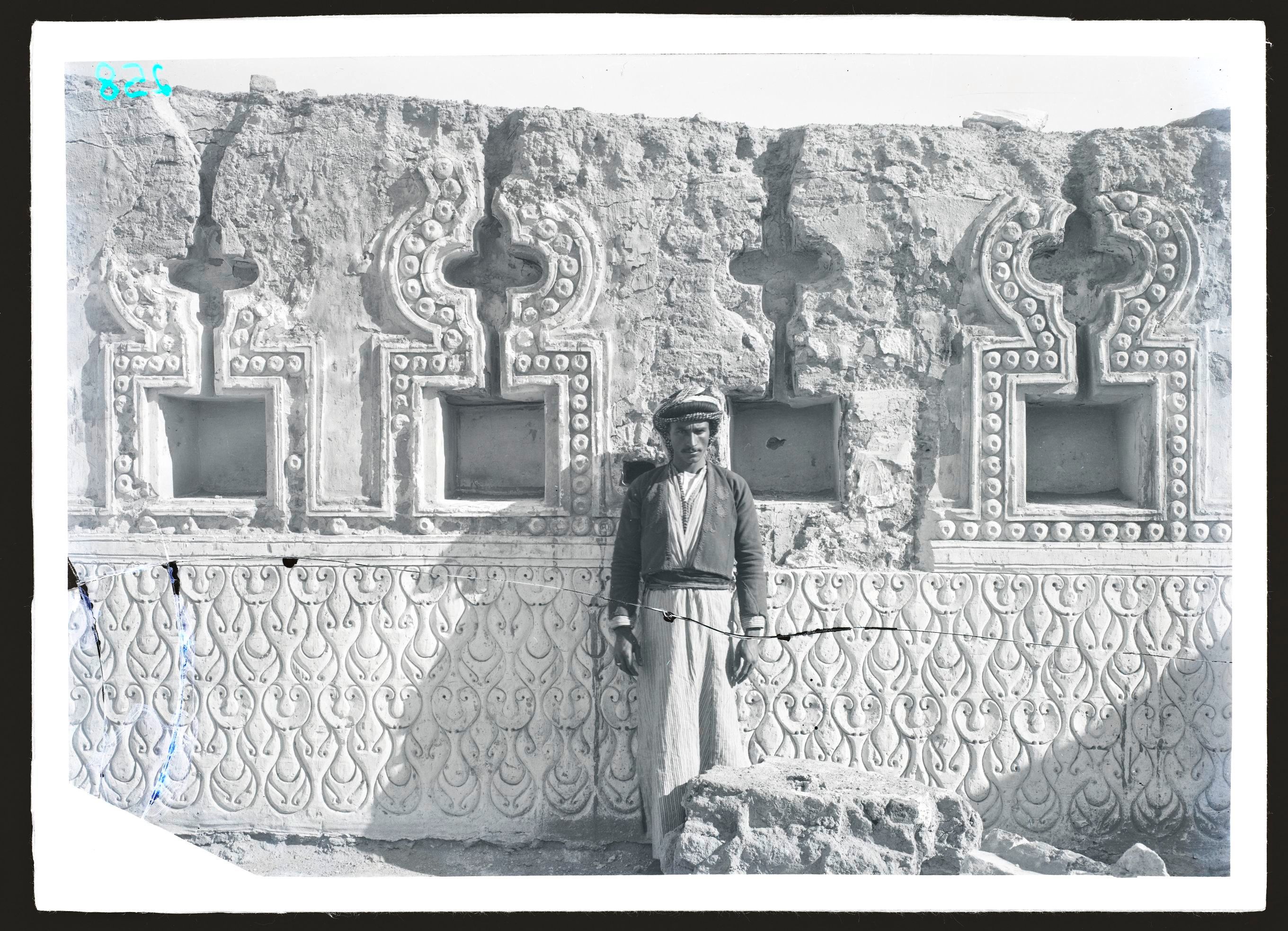Over the past year, the Museum of Islamic Art has digitalised the glass and plastic negatives and diapositives from the two excavation campaigns by the museum in Samarra (today: Iraq) in 1911-13.
In the Samarra Revisited exhibition, all of the 1500 or so preserved photographs have now been made accessible for the first time. Even the museum employees themselves were not fully aware of the portfolio.
This led to the idea of asking current and former employees to take a closer look into the digital reproductions. 24 participants chose five photographs from Samarra which touched on their areas of work. You can find each of their "favourite photos" with comments as a digital print in the exhibition. All the other digital reproductions chosen, and the reasons for their choice, are available in the media station.
This selection shows the wide spectrum of possible uses for excavation photographs: they help archaeologists and provenance researchers to locate sites - RESEARCH. They show that excavation photographers also endeavoured in the past to enable a comparison of their photographs with the originals - COMPARE. As the photographed site situations become lost forever as a result of the excavation work, the significance of photography must not be underestimated! However, the photos also act as links to current social discourses - QUESTIONING. They delight and inspire - JOY. Finally, the photos shown here document a formidable site of Islamic archaeology with a charm and appeal that has not been lost today - LOCATE.
CHRSTIAN KRUG, PHOTOGRAPHER
"The landscape photos show just how important a benchmark is in the picture. How it is mostly excavation helpers who are acting as a benchmark here. Without them, it would be difficult to estimate the dimensions properly. You could also see a mountain here."
BENCHMARKS
The environment in the landscape photos made me realise how important a benchmark is in the picture. In this picture, as with many other cases, it is mainly excavation workers who have been "draped" as a benchmark.
STEPHANIE FISCHER, RESTORER
"You can see a colour card at the lower edge of the picture. Colour photography, which had only been recently developed, was used in Samarra for documenting excavation findings. Just like today, value was placed on a correct colour reproduction."
CASTING TECHNIQUE
A picture shows the negative impression of a stucco field with remnants of the original stucco on the inner side. This may be a kind of seal to protect the surface, or a negative shape for a cast. We are still busy dealing with the problem of distinguishing between the original and the cast while investigating the Samarra stucco. The pictures therefore provide important hints about the techniques used.
The second picture shows surface lamination before the wall drops, the function is also unclear.
ANDREA BECKER, ARCHAEOLOGIST
Several excavation photos show people who mainly functioned as benchmarks. However, animals are also popular benchmarks - horses with and without riders, donkeys, or even the excavation dog, which attracts the viewer's attention here.
PEOPLE ARE THE MEASURE OF ALL THINGS - OR ARE THEY?
Among the excavation photos, you can find several with short and tall, old and young people. In many cases, they would usually act as a benchmark for a building, a room or just a wall.
However, other things can be used as benchmarks as well: animals are a popular choice - horses with and without riders, donkeys, or even the excavation dog. A toolbox, coats and shoes have completely stolen the thunder of conventional levelling rods, raging poles and yardsticks!
STORY ABOUT THE SPECIAL EXHIBITION "SAMARRA REVISITED"
Samarra Revisited
What actually happens behind the scenes in the museum? The special exhibition "Samarra Revisited - New Perspectives on the Excavation Photographs from the Palaces of the Caliph" opens a very personal insight of the employees into the museum work.
